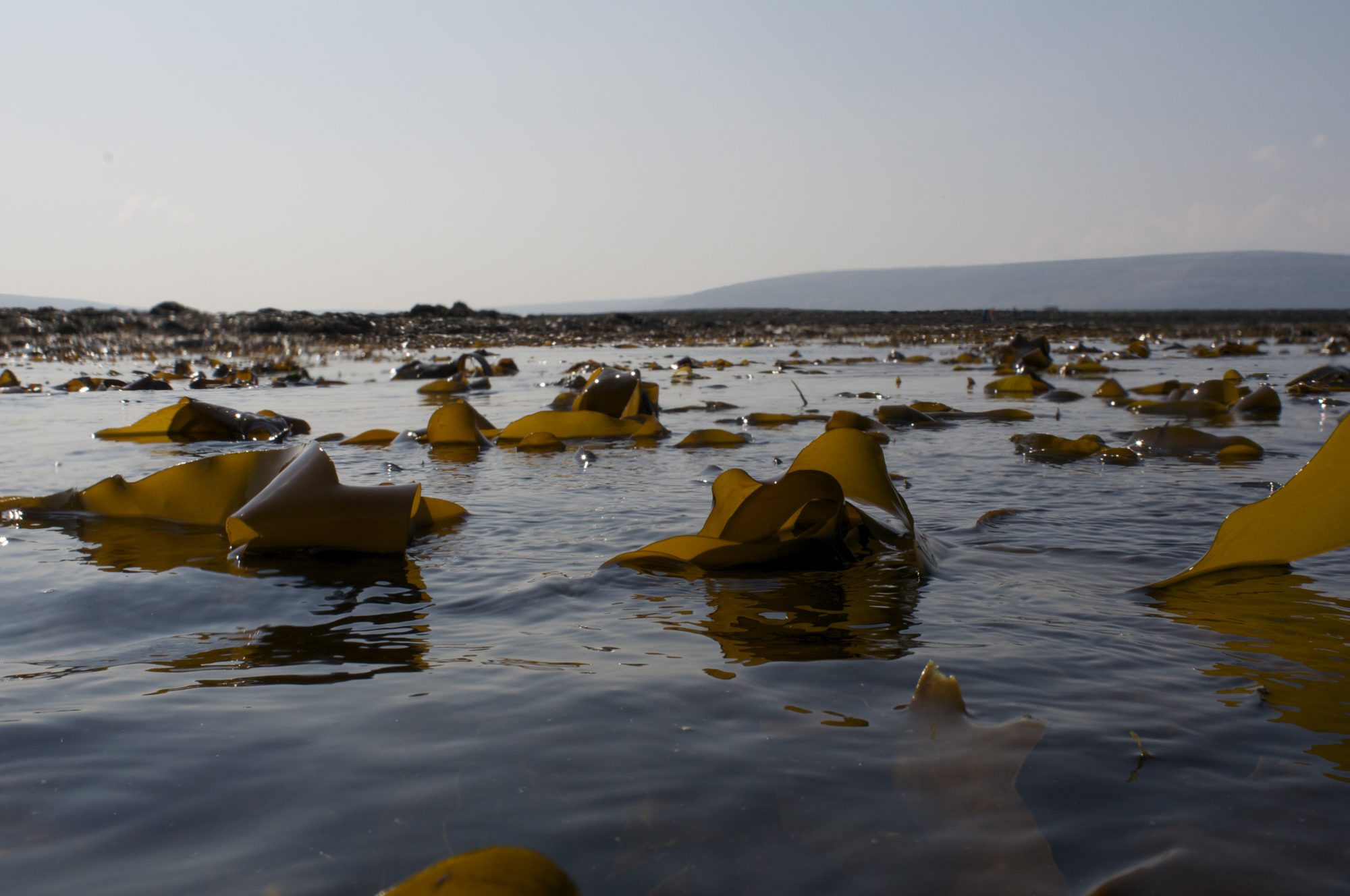The Algae4IBD project seeks effective treatments for a chronic disease affecting 6.8 million people. Juan F. Samaniego explores whether algae are the definitive solution for inflammatory bowel diseases
From huge kelps to invisible microalgae, algae are rich in active compounds that are potentially good for our health. However, the process of extracting and transforming them into foods and medicines that can be used on a large scale remains full of challenges.
Wind and water carve the landscape of Brittany, a French region known for its wild nature, steep cliffs, and long, unspoiled beaches. Vegetation is scarce in such a rugged land, but Brittany tells a different story underwater. The east coast of the Celtic Sea, which stretches to Ireland, hosts one of the most extensive kelp forests in Europe.
Kelps are a family of large seaweed species that can grow up to 6 metres long in water. These brown algae, belonging to the order of the Laminariales, form underwater forests that serve as home and food sources for thousands of other species, including humans. In Brittany, as in other parts of the world, kelps have been used for centuries by local communities, especially for agricultural purposes. Those same algae may also have the solution to a common, chronic condition affecting our digestive system.
The EU-funded Algae4IBD project aims to develop functional food and medication against inflammatory bowel disease (IBD), a chronic disease suffered by 6.8 million people around the world. A team of scientists and experts from 21 institutions and 11 countries seek answers in 150 types of algae, from huge kelps to microscopic, unicellular species. But how exactly is marine life being transformed into medicine?
First, identifying the key compounds
Omega-3 fatty acids are one of those “healthy fats” that benefit our body. We’re used to taking them through some kinds of fish like salmon or sardines. But they’re produced by microalgae; fishes accumulate them like we do by eating other organisms.
Each algae species has its strength and its own useful compound. The project’s first goal is to identify which one has the potential to be used for an IBD treatment. But before that, researchers have to gain access to algae.
“We’re mainly in charge of sourcing algae, from local and other sources, extracting the compounds of interest, testing some of their activity and scaling up the processes,” explains Benoit Queguineur, Partnership Manager, R&D at Algaia, a Company Partner of the Algae4IBD project, based in Brittany, not far from those huge kelp forests that grow under the ocean waters.
“We buy about 40,000 tonnes of seaweed per year from local harvesters, a fleet of 30 different boats with licenses to harvest kelp in Brittany. We get Laminaria hyperborea, a winter species, and Laminaria digitata, a summer species,” adds Queguineur. “We are also in contact with other seaweed cultivators across Europe.”
Following the Atlantic coast of Europe to the south, researchers from the Center of Marine Sciences (CCMAR) of the University of Algarve in Portugal have worked with Necton, a local partner that produces microalgae on an industrial scale, and they provide some of the microalgae of the Algae4IBD project and give insight regarding the bioactive compounds.
“We also isolate new strains from the environment and look for compounds with in vitro antioxidant and anti-inflammatory activity,” explains Luísa Barreira, Senior Researcher and Co-leader of the Marine Biotechnology Group from CCMAR, and member of the GreenCoLAB.
So far, several promising compounds have been found among the Algae4IBD partners. Some have even been greenlighted to move to the in vivo mice models testing, which mimics IBD. Such trials are going to be carried out by the lab of Dorit Avni, the Coordinator of the project and Head of the Phytochemicals and Immune- Mediated-Diseases Group at the MIGAL-Galilee Research Institute in Israel, which has already been granted permission to do so by the Government.

Finding a scalable product
The Algae4IBD project follows many different paths at the same time. Partners focus on one or several of them, and all researchers work simultaneously. But the big picture shows a clear road towards the project’s final goal: developing functional food and medication from algae that work against pain, inflammation and IBD. To be viable, those products must be produced at an industrial scale.
The road starts by growing and harvesting algae, it continues by breaking them and extracting, testing and characterizing compounds, and it ends by producing them in large amounts. This last step is also the most challenging.
“Once a promising bioactive property has been identified, algae biomass needs to be processed at a scale of a few kilograms to generate larger amounts of solvent extracts, which are necessary for more extended testing,” explains Leen Bastiens, Senior Project Manager at the Flemish Institute for Technological Research in Belgium (VITO), another Partner of the project.
“At Algaia, we screen a wide range of solvents for the compound extraction, and once we have our recipe set up, we scale it up to a pilot process,” highlights Benoit Queguineur. “For example, if we start with 100 grams in the lab, we’ll have 100 kilogrammes in the pilot. The ultimate goal is to scale it up to 100 tonnes, which is the capacity we have in our factory in Brittany. But we’re not there yet.”
According to both Bastiens and Queguineur, the main challenge is ensuring the compounds still have activity when the processes scale up.
“It’s also very important to gather information across all the steps, and I think this is done really well within this consortium,” adds Queguineur.
IBD affects a growing number of people, yet its causes remain unknown, nor does an effective cure exist. As the pharmaceutical industry tries to find treatments and ways to prevent the disease, the final answer to the problem may be hidden in the ancient world of algae.

This work is licensed under Creative Commons Attribution-NonCommercial-NoDerivatives 4.0 International.


